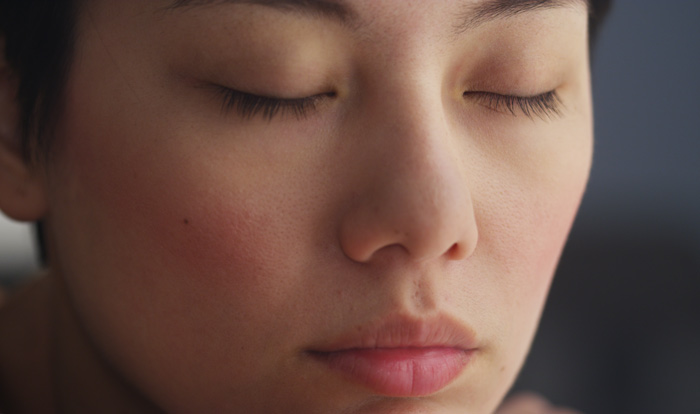Without a doubt, there are days when too many thoughts zoom through our brains at once. The to-do list seems endless, time demands are considerable, and it’s as though we’re splitting ourselves into multiple directions. One way to return (or retreat—however you want to look at it!) to a calm center is through mindfulness.
What Is Mindfulness?
If we say mindfulness is simply a “purposeful pause,” it doesn’t really explain the power and potential of such an action. However, this is exactly how scientist and meditation teacher Jon Kabat-Zinn describes it to make it easier for us to understand. Basically, you “pay attention to the present moment, on purpose and without judgment.”
Kabat-Zinn is the founder of the Stress Reduction Clinic and the Center for Mindfulness in Medicine, Health Care, and Society at the University of Massachusetts Medical School. A noted author and professor as well, he’s probably the foremost expert on mindfulness in the U.S. His work first started in the late 1970s with a program designed to help people with terminal illnesses reduce stress and anxiety.
Kabat-Zinn developed nine core attitudes of mindfulness that make up what is now known as mindfulness based stress reduction:
- Acceptance: this helps us avoid trying to “force things to be as they are not…which creates an enormous amount of difficulty.”
- Beginner’s mind: to help us understand the present moment, we need to have “a mind that is willing to see everything for the first time.”
- Generosity: through daily practices of gratitude, people are “more likely to report having helped someone with a personal problem or offered emotional support to another person.”
- Gratitude: a daily acknowledgement of gratitude improves energy and sleep, plus reported “lower levels of depression and stress.”
- Letting go: learning how to “let our experience be what it is and practice observing it from moment to moment.”
- Non-judging: resist the urge to quantify the pause and “just watch whatever comes up.”
- Non-striving: releasing control over goals; instead, “With patience and regular practice, movement toward your goals will take place by itself.”
- Patience: believing that “we understand and accept the fact that sometimes things must unfold in their own time.”
- Trust: allowing this process to help you “trust in your intuition and your own authority, even if you make some ‘mistakes’ along the way, [rather] than always to look outside of yourself for guidance.”
Kabat-Zinn isn’t the only facilitator of mindfulness practices. Others include Michael Beckwith, Susan Piver, Thich Nhat Hanh, Sara Auster, Jack Kornfield, Kristin Neff, Deepak Chopra, Emily Fletcher, Eckhart Tolle, Sharon Salzberg, and Andy Puddicombe, just to name a few.
How to Include Mindfulness in Your Daily Life
Some people find the peace and stillness they need in recovery through spirituality. Since mindfulness isn’t defined by any form of belief, it can enhance spiritual practices, too. If you’re following a 12-Step program, mindfulness can support the discoveries you make through the process. Other individuals looking for better ways to avoid relapse find that purposeful pauses throughout the day help them be less reactionary to triggers and cravings.
So how do you get started?
The Greater Good Science Center at the University of California, Berkeley (GGSC) suggests taking this quiz to identify your habits and then learn what mindfulness techniques might be helpful. Of course, this isn’t a pass/fail situation, but a chance to explore what might be a new concept for you, understand how your current state of being might be affecting you, and have access to informative resources.
Also from the GGSC, here are some interesting ways to include mindfulness in your everyday life that are simple and don’t take a lot of time.
- Do a “raisin meditation“. This should take about 5 minutes and involve all your senses, from touching and observing to smelling and tasting. This helps you understand how a pause can be meaningful.
- Practice mindful breathing. Each day for about 10-15 minutes, find a comfortable place to sit or lie down. Then slowly inhale and exhale. Keep your eyes partly open so you have a soft gaze without staring at one thing or another. Let your mind follow the path of your breath. If thoughts appear, let them travel the path, too.
- Take a “savoring walk.” Set aside one week to take a 20-minute walk each day, following a different route every time. Allow yourself to really notice the sights, smells, and sounds around you, such as the architecture, trees, and flowers. With each new observation, simply pause for a moment and “identify what it is about that thing that makes it pleasurable to you.”
Now it’s easier to understand what a purposeful pause is and how it can help you.
GGSC indicates researchers have discovered numerous health benefits that result from a consistent mindfulness practice, including reducing chronic pain and symptoms of anxiety, depression, and stress; promoting a stronger immune system response, and improving cognitive abilities, among others.
Progressive Addiction Treatment at Willingway
Substance and alcohol addiction inpatient rehabilitation treatment is more effective when people have an opportunity to explore various coping skills, therapeutic techniques, and holistic methods to improve their well-being. At Willingway, our staff wants to ensure you have whatever you need to make your recovery journey fulfilling. Review more of our blog posts to see what we can offer you.

